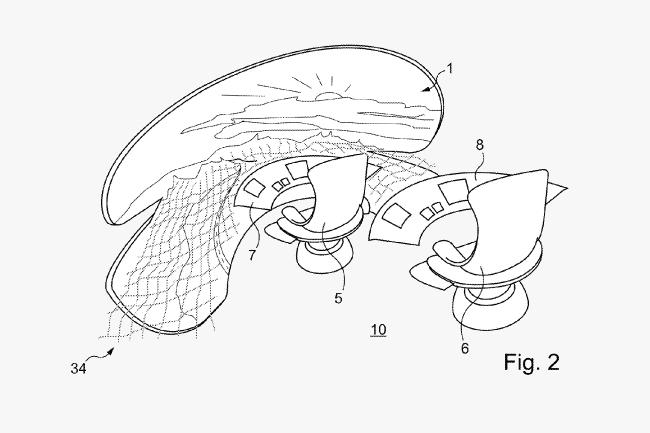
And what’s more, it wants to move the cockpit to another part of the plane altogether.
In a patent filing published last week, the commercial aircraft manufacturer explains that having the cockpit at the front of the plane greatly reduces its aerodynamic qualities, with a more complex shape and structure required to house it. In addition, the heaviness of the windows and its reinforcements adds significantly to the aircraft’s overall weight, reducing its fuel efficiency markedly.
And then think of all the seat space the cockpit takes up, “limiting the financial profits for the airline company exploiting the aircraft,” as Airbus puts it in its patent filing.
With this in mind, the plane maker envisages moving the entire cockpit “to an unused zone of the aircraft”, suggesting locations such as the lower part of the vertical tail or below the main cabin area, as shown in the image below.

So how will the pilots see where they’re going? Why, wraparound video screens, of course.
On-board cameras will serve to combine real-time video with pre-stored data to provide pilots with all the visual information they need, with the design aimed at “immersing the pilot in a three-dimensional universe.”
The patent also talks of holograms of weather systems or objects on the ground (when the plane is taxiing) being projected onto the electronic view screens, with overlays “improving the perception of the pilot of the outside scene, thereby increasing safety.”
One hopes an abundance of back-up systems would be in place to deal with video-screen malfunctions, though presumably the autopilot could save the day in all but the most extreme of circumstances.
Of course, with UAV (unmanned aerial vehicle) technology advancing so rapidly, we could well leapfrog Airbus’s design to one where the pilots sit in an office with a joystick and a cup of coffee as they fly their passenger-filled plane from A to B, though the airlines would obviously have to create a very clever marketing campaign to convince passengers that it’s a good idea.
[via Gizmodo]


